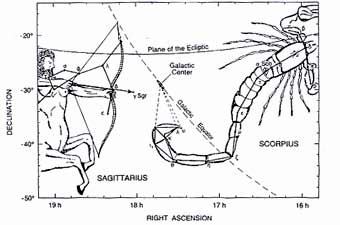Estimating
the Superwave's Intensity
Estimating
the Superwave’s Intensity
Cosmic ray
electrons currently make up only about 1 percent of the total
cosmic ray background flux, the other 99 percent being cosmic
ray protons, mostly coming from outside our Galaxy. The current
beryllium-10 background level is chiefly produced by this extragalactic
proton component. Since the superwave would be almost entirely
composed of cosmic ray electrons, its flux must increase by
100 fold above the present cosmic ray electron background for
its intensity to equal that of the proton background. Since
electrons are comparatively inefficient producers of the Be-10
isotope, the cosmic ray electron flux might need to increase
a hundred fold to double the Be-10 production rate. In addition,
the solar system’s heliopause magnetic field sheath screens
out much of the incident cosmic ray flux, so superwave cosmic
ray fluxes outside the solar system would be several fold higher
still. So the cosmic ray electron intensity outside the solar
system could easily have increased 30,000 fold with the arrival
of this recent superwave. More-over, around 13,000 to 15,000
years ago, the solar wind was much stronger than it is today
since flaring activity up to 50 fold higher. So an additional
7 fold increase should be included to account for the solar
wind’s increased tendency to shield cosmic rays from the
Earth. In all, cosmic ray electron intensities may have increased
by over 10 to the power of 5 fold

The constellations
Scorpio and Sagittarius plotted in celestial coordinates.
From Earth
Under Fire by Paul LaViolette
Earth
Under Fire by Paul LaViolette
|